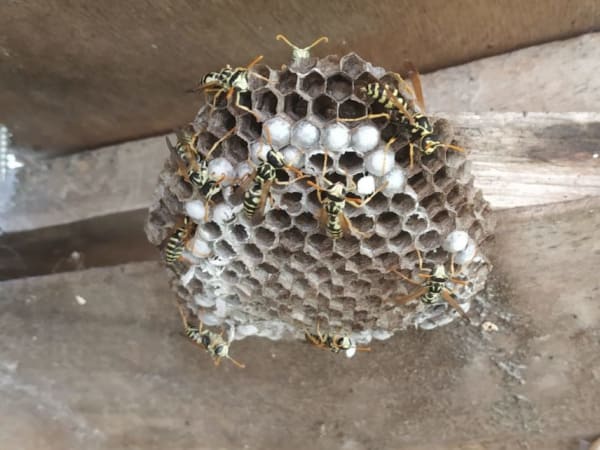
 12
12





_______________
Land Steward


 3
3




 3
3




greg mosser wrote:looks a bit like a pompilid wasp. If you see them doing a rhythmic flicking of the wings while walking on things, that's a good sign it's a pompilid. interestingly, pompilids are frequently spider-hunters, so they may be eating members of the garden patrol that you'd like to keep around...still, cool wasps that are to my knowledge never aggressive toward people.


 4
4





Striving to grow things as naturally, simply, and cheaply as possible! 
My YouTube channel
 2
2




Steve Thorn wrote:Wasps have recently become one of my favorite insects, they're so helpful and amazing!
The majority of wasps that I've seen lately seem to be the solitary and generally non aggressive kind also. I used to be a little nervous whenever I saw wasps, now I get excited and curious!
_______________
Land Steward






To be is to do …Kant
To do is to be ..Nietzsche
Do be do be do…Sinatra
Scooby dooby do …St. Thomas
 2
2




John F Dean wrote:Odd. I was recently clearing some brush and was stung on my forearm by a black wasp. No doubt I was near its home. The odd part is that I have not been stung by one in years, and my arm swelled for 4 days ......which also never happens.

_______________
Land Steward


 2
2




To be is to do …Kant
To do is to be ..Nietzsche
Do be do be do…Sinatra
Scooby dooby do …St. Thomas
 6
6




Zone 6, 45 inches precipitation, hard clay soil




 4
4




![Filename: Feldwese_Parasitoid.jpg
Description: [Thumbnail for Feldwese_Parasitoid.jpg]](/t/144657/a/114117/Feldwese_Parasitoid.jpg)
I am only one, but still I am one. I cannot do everything, but still I can do something; and because I cannot do everything, I will not refuse to do something that I can do. (E.E.Hale)
 1
1






|
His name is Paddy. Paddy O'Furniture. He's in the backyard with a tiny ad.
The new permaculture playing cards kickstarter is now live!
https://www.kickstarter.com/projects/paulwheaton/garden-cards
|







